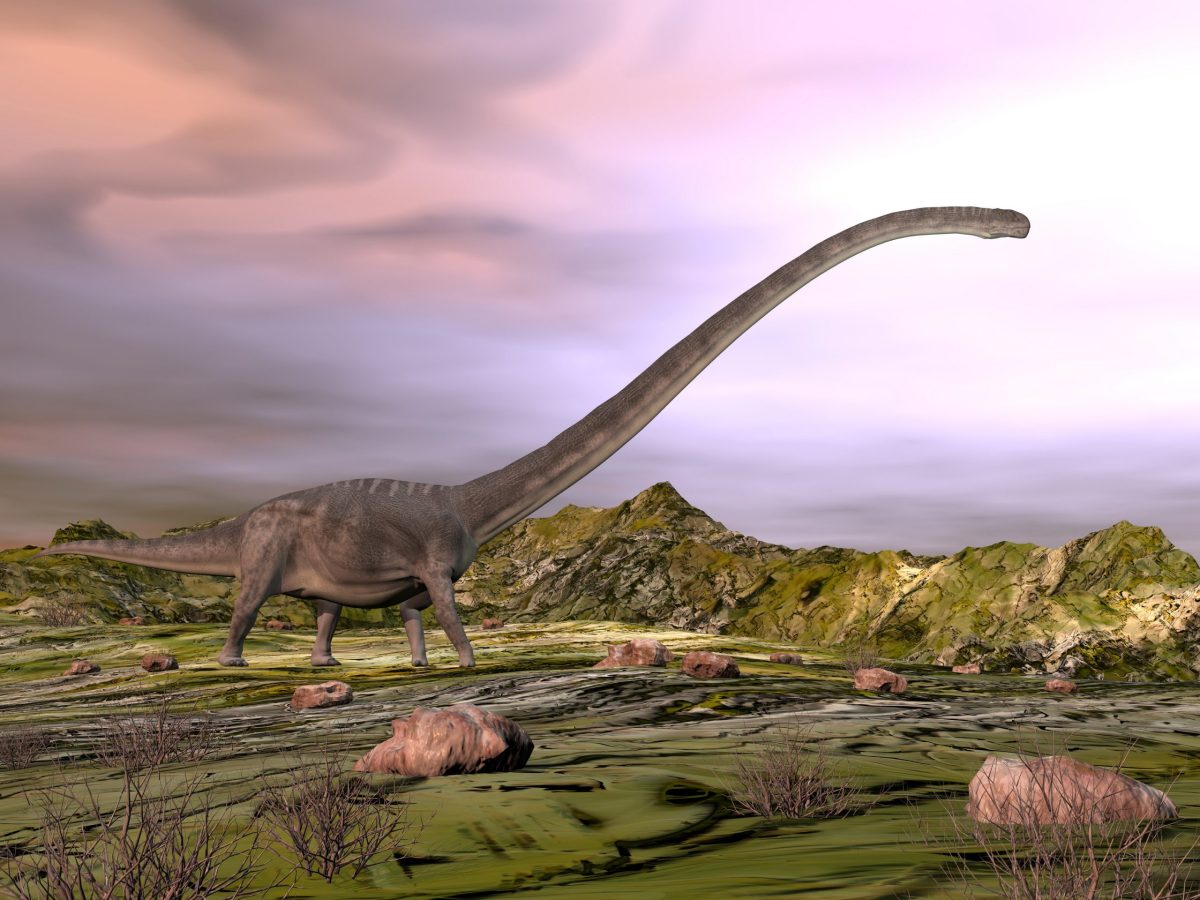The Time of Giants: How Did Dinosaurs Get So Big?
Posted on Categories Discover Magazine

Sauropods that tower above treetops and tyrannosaurs that make the Earth tremble beneath their weighty footsteps are two iconic dinosaur images. These prehistoric giants have fascinated us for centuries, igniting our imagination and curiosity about the world that existed long before we set foot on this planet.
Among the myriad of questions that arise when we ponder these magnificent creatures, two stand out. Why were some dinosaurs so big? How did their environment play a role in their size?
“We still don’t know much about gigantism in sauropods and in dinosaurs in general,” Andreas Jannel, a postdoctoral researcher at the Museum für Naturkunde in Berlin, says. “It’s a very active field of research.”
Read More: How Big Was Quetzalcoatlus and Other Giant Pterosaurs?
What Were the Bones of Gigantic Dinosaurs Like?
Jannel’s speciality is gigantism in sauropods, specifically how they were able to sustain their massive weight on land. Some sauropods, such as Patagotitan, stretched for 37 meters and weighed in at 57 tons. It lived during the Early Cretaceous period, around 101 million years ago, and is potentially the longest dinosaur ever. It is just one of a group known as the titanosaurs, which includes the largest of the sauropods.
Some theories – such as lower gravity and higher oxygen levels – were touted or suggested in the past. Largely debunked, other hypotheses include a complicated blend of reproduction, ecological and physical adaptations that allowed these behemoths to grow so large. Other explanations include any number of characteristics from lighter bones to bird-like breathing, while gigantism also offered protection from predators, which also grew larger over time, and in the case of sauropods, allowed these dinos to reach different food sources.
Read More: How Do Scientists Reconstruct What Dinosaurs Looked Like?
Why Did Large Dinosaurs Have Soft Feet?
(Credit: Herschel Hoffmeyer/Shutterstock)
Jannel’s research, meanwhile, suggests that the evolution of a soft tissue pad on sauropod feet was crucial to allowing these lumbering giants to displace their enormous weight. Without such an adaptation, they likely would not have been able to grow so large.
“The acquisition of a developed soft tissue pad by the Late Triassic-Early Jurassic may represent one the of key adaptations for the evolution of gigantism that has become emblematic of these dinosaurs,” Jannel and his co-authors write.
This alone does not explain gigantism in sauropods, but it is part of the route that allowed sauropods to reach such heights, Jannel says. “It’s a combination of adaptation, including the soft tissue pad, the bone structure, etc. Altogether, and little by little, they reached these larger body sizes.”
Read More: Scientists Find Footprints Older Than the Dinosaurs
Did the Largest Dinosaurs Max Out?
Though they varied broadly in maximum height and weight, sauropods topped out at around the same size. “We see an increase in body mass very early in their evolution,” Jannel says. He explains that after the Late Jurassic period – 161 million years ago – sauropods arrived at a relatively “constant state of gigantism.”
“They reached a certain level where they couldn’t get to bigger sizes, likely because their bodies were already supporting the extremes they had achieved,” Jannel explains.
Similarly, two-legged carnivorous dinosaurs – theropods, which include iconic dinos like Tyrannosaurus Rex, Giganotosaurus and Spinosaurus – reached a peak size.
“Almost all of these big theropods – some of which diverged from a common ancestor tens of millions of years earlier and had been evolving independently for a long time – always seem to cap out at about the same size,” Thomas Cullen says.
During the Cretaceous period – from 145 to 66 million years ago — theropod dinosaurs evolved across different continents, with the largest reaching roughly the same size, Cullen adds. Spinosaurus, with its notorious long snout and sail fin, is generally considered the largest of the bunch, but others weren’t far behind. “I think that’s very interesting because it suggests there is an upper bound of how big a bipedal animal can get before it can’t survive.”
Read More: Could Spinosaurus Really Take On T. rex? And Other Facts
How Did Resources Impact Dinosaur Size?
Like with sauropods, theropods likely became bigger and bigger for a variety of reasons, according to Cullen. His own research indicates that meat-eaters like Tyrannosaurs and Carcharodontosaurs followed different evolutionary paths to reach their massive sizes.
“I think it’s mostly selective pressures towards finding new areas in the environment to exploit resources, in terms of why they got so big in the first place,” he adds. “There certainly seems to have been a sort of niche space in the ecosystem that could accommodate such a large predatory animal.”
Both researchers agree that the jury is still out on exactly why dinosaurs became so large; there are multiple explanations that ongoing research will continue to shed light on while raising yet further questions.
“I think it’s not a settled case for why dinosaurs frequently got so big and things like mammals today frequently do not,” Cullen concludes.
Read More: What Species Today Are Descendants of Dinosaurs?